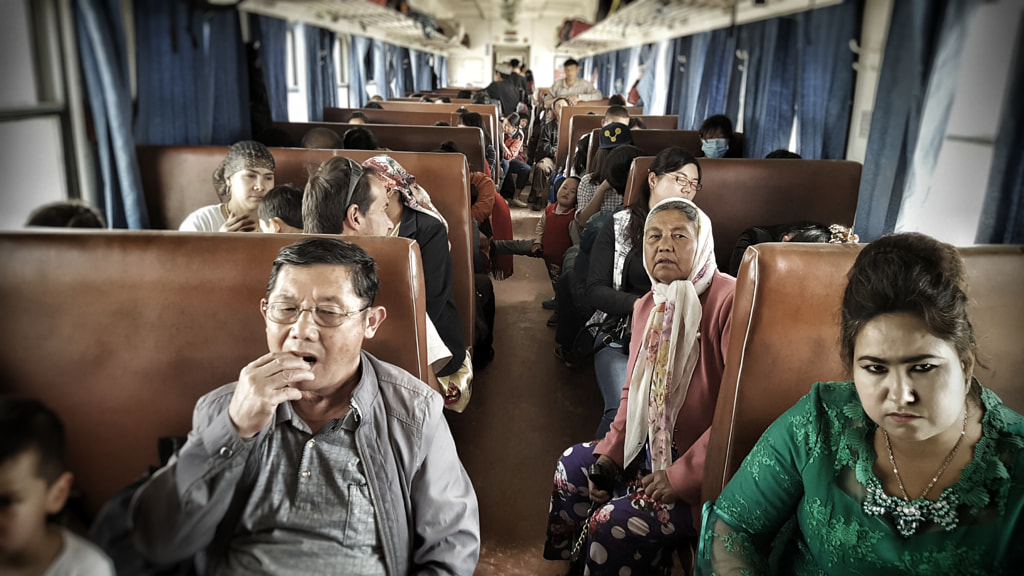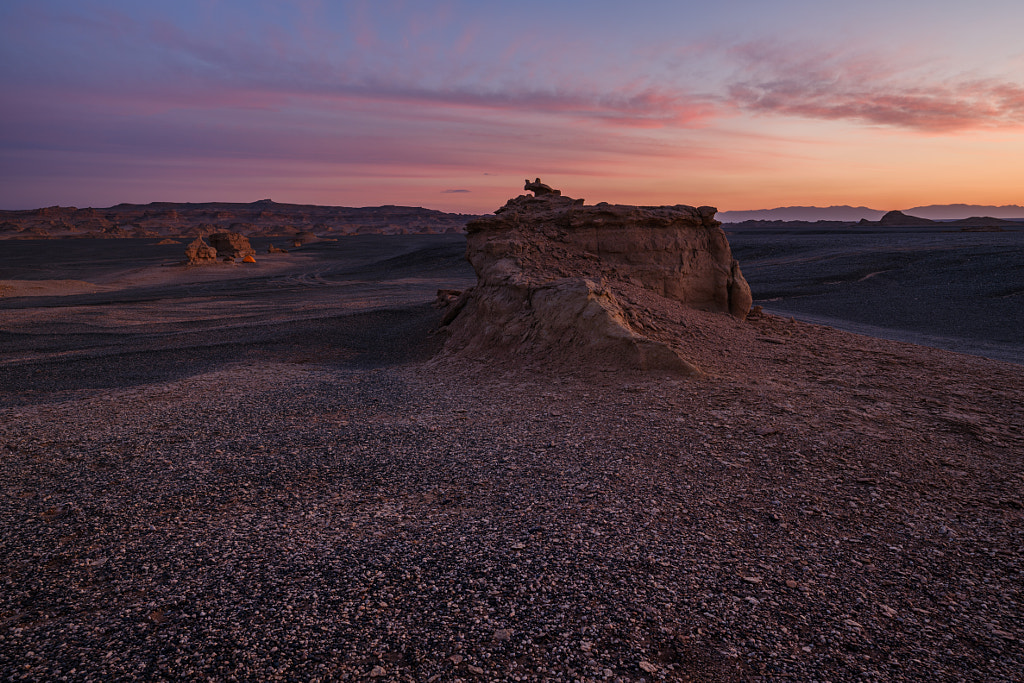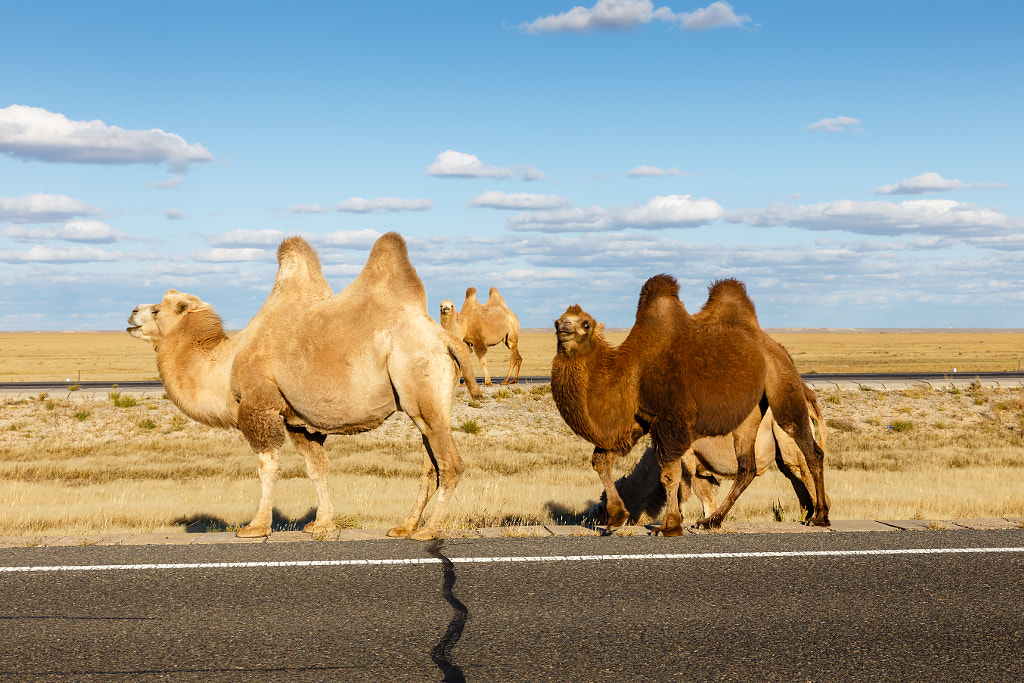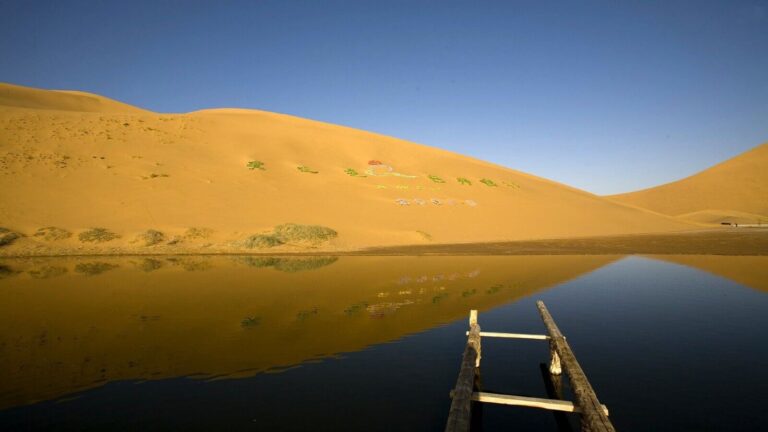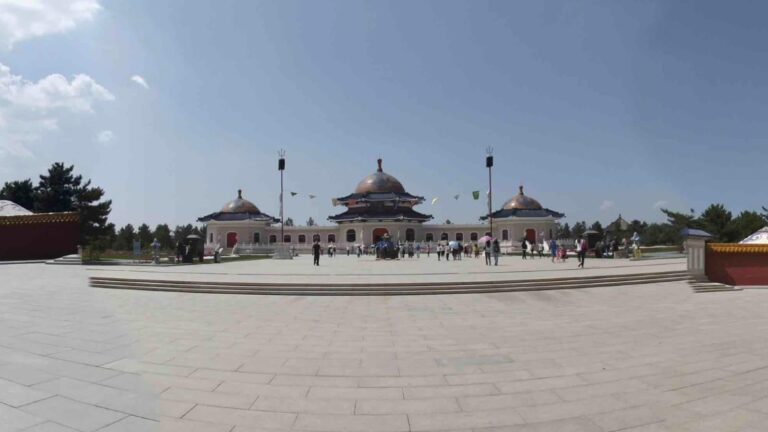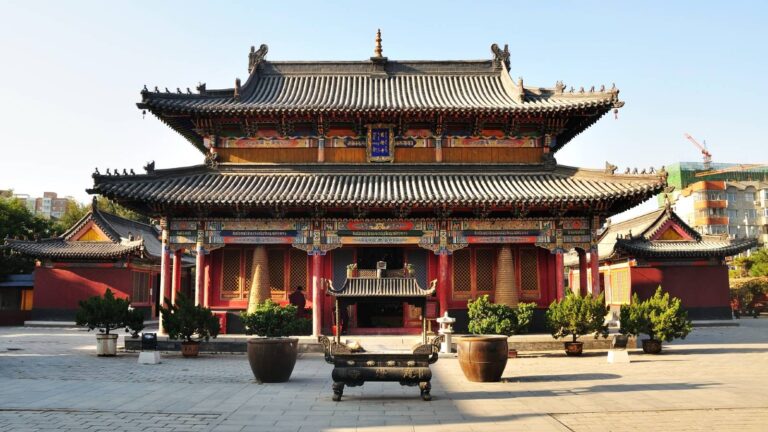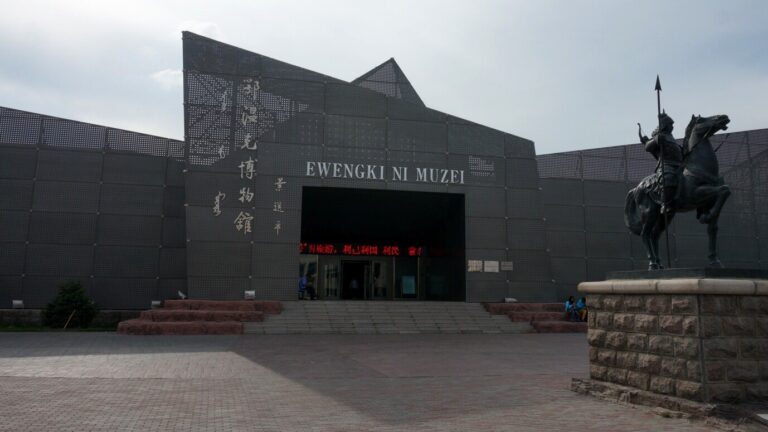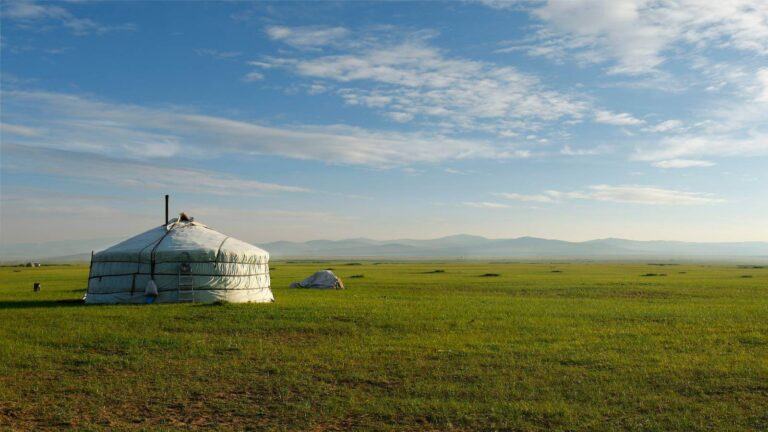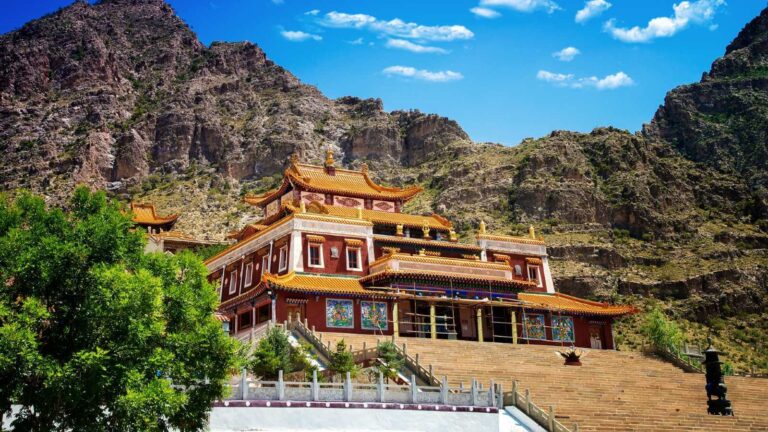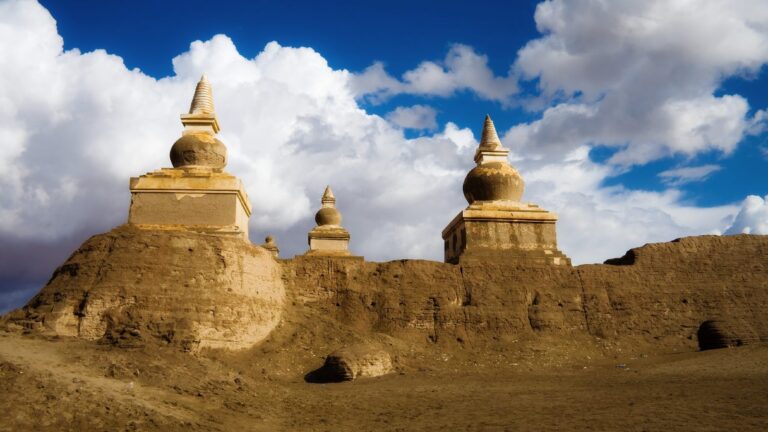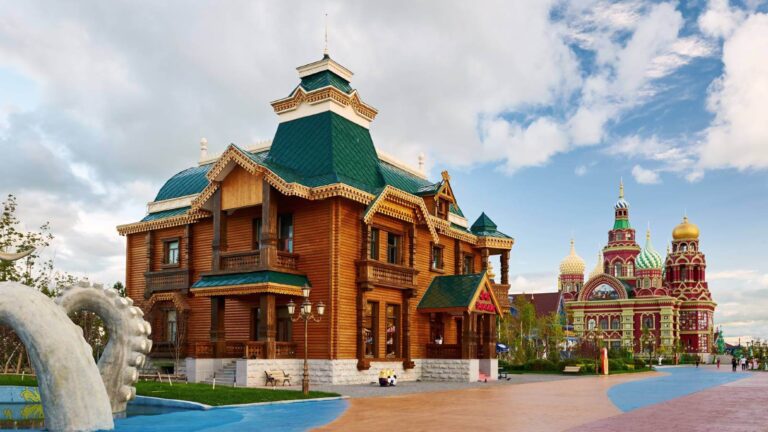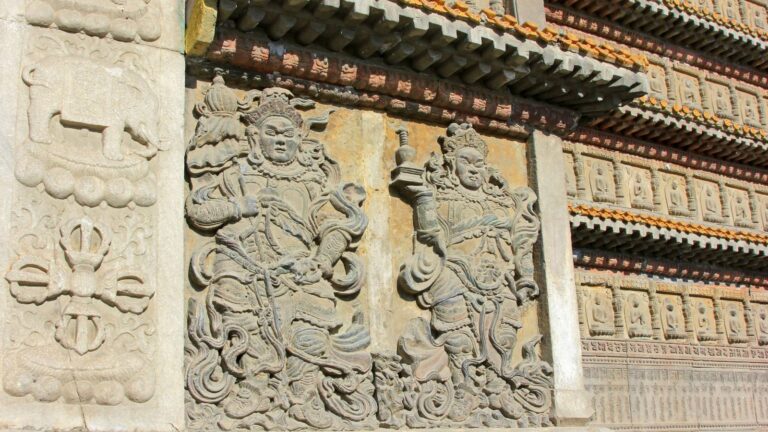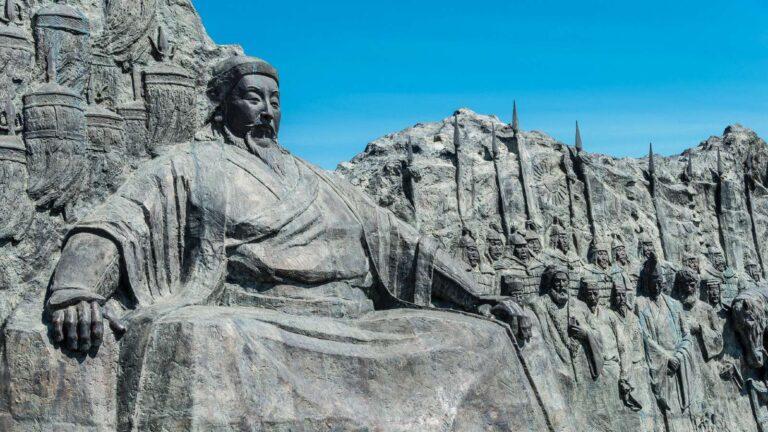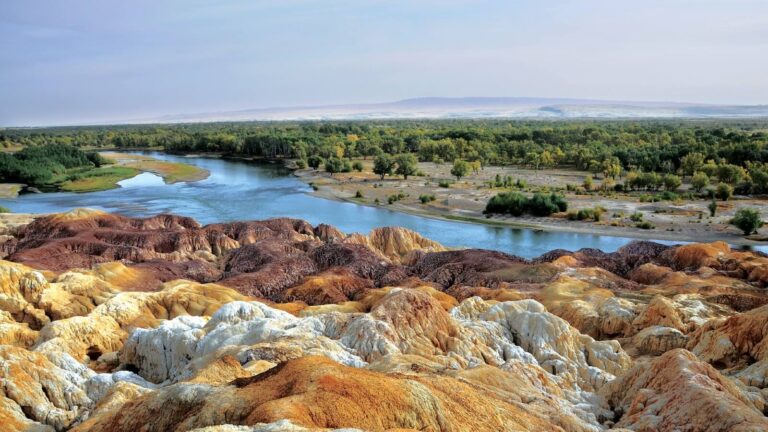Getting to and exploring Inner Mongolia can be an adventure due to its remote and sometimes less-connected regions. The developed parts of the province, including the capital Hohhot are served by a well-connected transportation network.
Air travel is the most convenient option for long-distance travel, with several airports serving domestic flights to major cities like Hohhot, Baotou and Ordos. Within the province, travellers can utilise the extensive bus system to navigate within and between cities.
Railway transportation is another efficient option, with high-speed trains operating between major cities, and local trains serving smaller destinations. Hohhot is the main railway hub, and the Trans-Mongolian branch of the Trans-Siberian Railway also crosses through a portion of Inner Mongolia via Erenhot.
To explore the province’s wilder landscapes and remote areas, particularly the desert regions, hiring a local driver and car is usually the best option. The long distances and challenging terrains here require careful planning and preparation.
Inner Mongolia’s diverse geography encompasses sweeping steppe, alpine mountains and the dry expanse of the Gobi Desert, along with a number of lakes and rivers. The Greater Khingan Range is the province’s most notable mountain range. Its snowy peaks and dense forests contrast with the Gobi Desert, which reaches across the province’s north and far west as sand dunes and rugged terrain.
The Yellow River cuts through the south-central part of the province, bringing crucial water and life. Diverse flora and fauna thrive here, including wildflowers, shrubs and grasses, along with a range of wildlife like wild horses, camels, rare birds and the endangered Siberian tiger.
Inner Mongolia’s history intertwines with greater China and its neighbour, Mongolia. The region was incorporated into the Chinese empire during the Qin dynasty (221–206 BCE). Subsequently, the area witnessed the rise and fall of various dynasties, including the Han, Wei, Northern Wei and Tang.
The Mongol Empire, under Chinggis Khan and his successors, emerged in the 13th century and encompassed what is now Inner Mongolia and vast neighbouring territories, across which the Silk Roads delivered goods, ideas and beliefs.
The Yuan dynasty (1271–1368 CE) was established by Chinggis’s grandson, Mongol leader Kublai Khan, in 1271. The Mongolian-run Yuan dynasty was at the time the world’s largest empire, controlling much of present-day China and beyond. Kublai Khan established a summer capital in what is now Inner Mongolia at Shangdu (Yuanshangdu).
In the early 1900s, Inner Mongolia became an autonomous region, and prior to the establishment of the People’s Republic of China, it was officially recognised as the Inner Mongolia Autonomous Region in 1947.
Thanks to its location at a crossing between the lush plains of south-central China and the far northern deserts, a number of ethnic groups and communities have traversed through what is now Inner Mongolia over the centuries, and several still call it home today.
The largest and most prominent of these groups are the Mongols, known for their nomadic lifestyle, distinctive traditions like throat singing and eagle hunting, and the annual Naadam festival.
Mongols make up a significant portion of the population and have played a crucial role in shaping the region’s history. In addition to the Mongols, the province is also home to other Indigenous groups, such as the Daur, Ewenki (Evenki), Oroqen and Hui, each with their own unique customs, languages and cultural practices.
With almost one-third of China’s grassland and about a quarter of its pasture area, Inner Mongolia has been traditionally renowned for its livestock.
Resources and manufacturing Inner Mongolia’s industry is based on the territory’s great and varied mineral wealth: some 60 different types have been found in the region.

